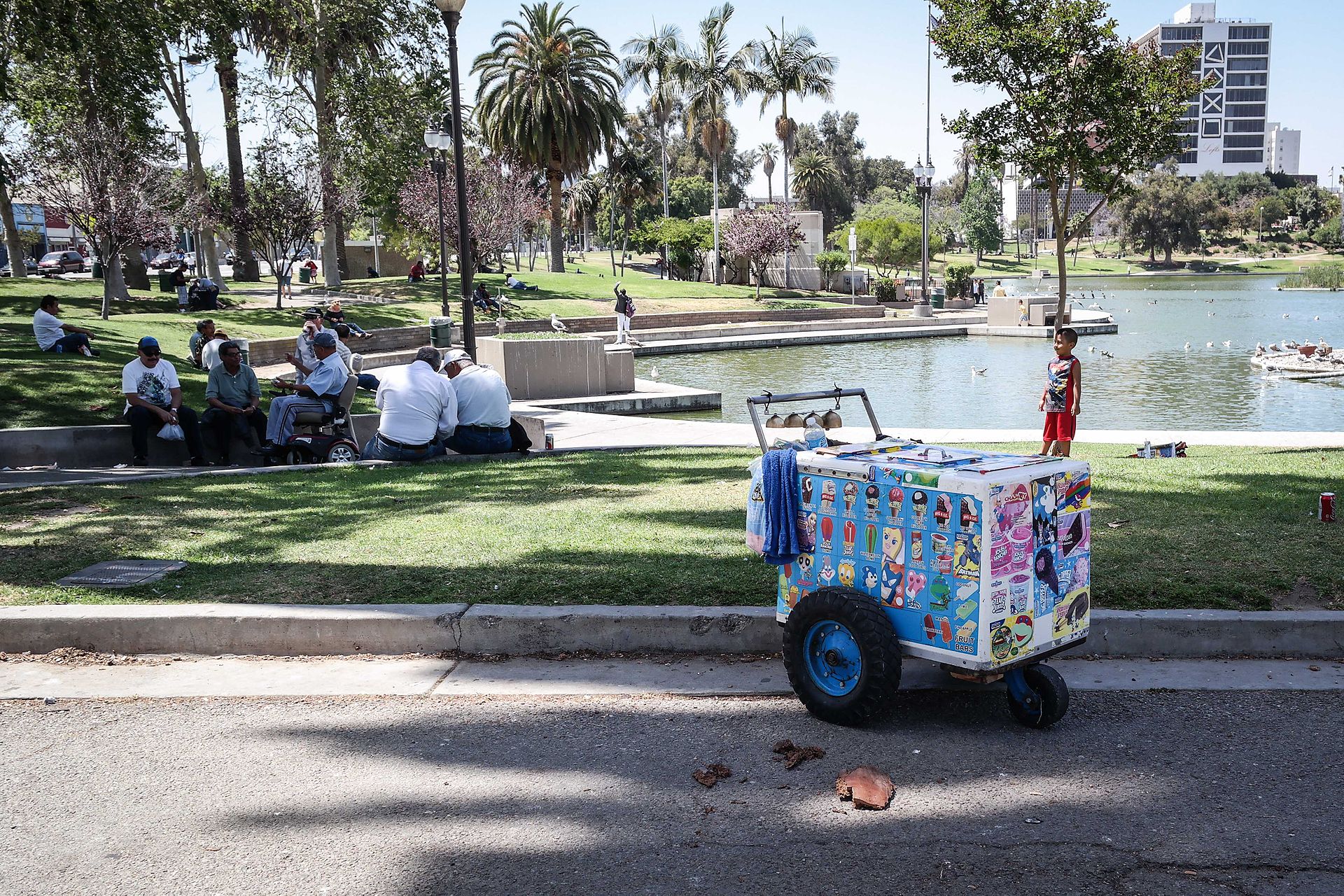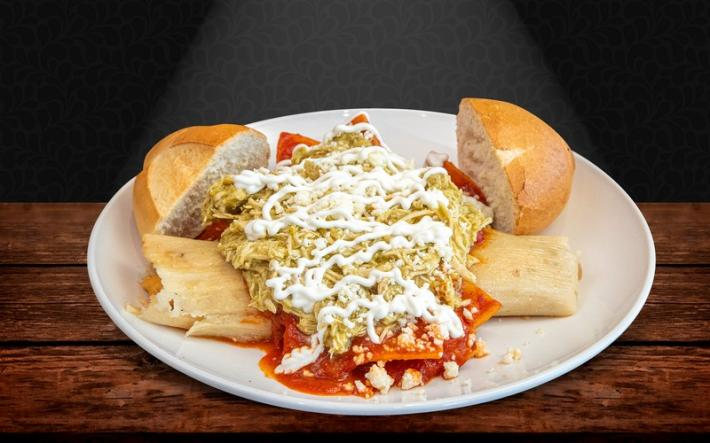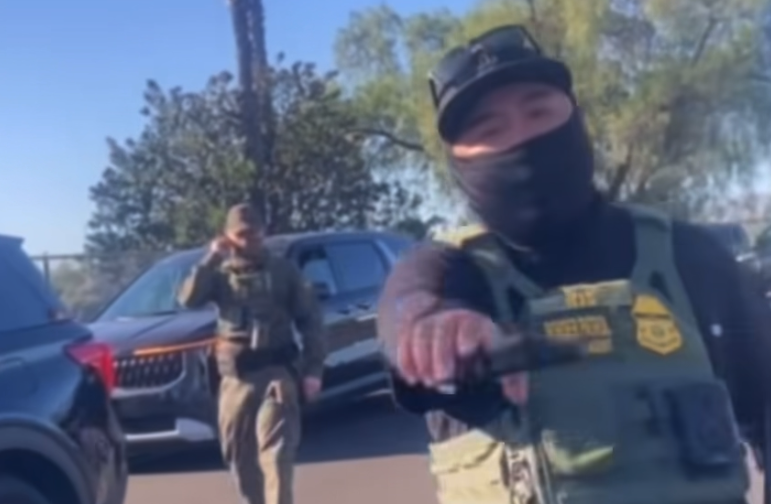This article, produced by Capital & Main, is co-published here with permission
MacArthur Park, mythologized in an improbable pop hit that said nothing about it, is a crowded immigrant portal plagued by homelessness, gangs, and drugs. When Jesse Katz, a former staff writer for the Los Angeles Times and Los Angeles Magazine, moved next to the park in 2011, he knew its rep: bad, very bad.

Katz saw beyond the headlines. The Central American street vendors below his 13th-story windows hustled to get by. Cops and robbers wouldn’t let them. The cops harassed, chased, and fined them. The robbers—gangs—shook them down for a turf tax. Katz, who had covered gangs as a reporter, knew the deal: They were dangerous thugs. But they were also young and clueless about how to crawl out of the quicksand of poverty surrounding them. Not to mention that they, too, had a “tax” to pay—to the overlord who ruled them from a supermax prison 1,000 miles away. The story was complicated.
In his new book The Rent Collectors: Exploitation, Murder and Redemption in Immigrant L.A. (Astra House, out this month), Katz dives into an overlooked undocumented immigrant community through the sensational saga of Giovanni Macedo. As a teenaged member of the Columbia Lil Cycos gang in 2007, Macedo botches a hit on a vendor who refuses to pay the gang tax. Instead, he accidentally kills a newborn gets strangled and survives being thrown off a cliff in Mexico. Macedo somehow pulls himself out of the gang life.
Katz discussed The Rent Collectors with Capital & Main.
This interview has been edited for clarity and brevity.
Capital & Main: What was compelling to you about Giovanni’s story aside from the absurdly, ridiculously dramatic way he literally climbed out of rock bottom?
Jesse Katz: I think I was drawn to Giovanni’s story for a couple of reasons. First of all, I did live in MacArthur Park for a decade. Not while these events were happening, but during the aftermath while the [federal RICO] trials were unfolding. I lived in a loft right at the edge of the park that looked across the park, over the lake and onto the whole ecosystem where all these things were occurring.
So I would see and often interact with the street vendors who were in the community. And I looked out at the gang turf claimed by the Columbia Lil Cycos. And so the world that shaped Giovanni was literally outside my window. I felt a very personal connection to the material even though the experience is not my own experience.
The crime that’s the center of this book was committed by a gang, but it wasn’t about gang rivalry, it was about maintaining economic dominance — it preserved this larger control over the neighborhood. I found that interesting. In my mind, it made the violence more rational and purposeful, if certainly no less horrible.
And then I was just really captivated by this young person who gets dragooned into doing something horrible that he doesn’t really want to do, but he kind of has no choice at that moment, or he has only some really bad choices at that moment, and he goes through with it. He steels himself and shows that he’s not squeamish. And then he botches the whole thing, which has all these repercussions.
“When I first came to L.A. in the 1980s and knew very little about this place, I stumbled upon MacArthur Park, and it felt the least like L.A. that I could have ever imagined.”
You’ve said you moved to MacArthur Park as an empty nester. It makes sense coming from a suburb like Glendale, which is centered around schools and kids, to want out when your kid has left for college. But why MacArthur Park? You knew the place. There are so many interesting neighborhoods in L.A. I can’t help but think you—as a journalist, as a writer, as a storyteller — went there knowing you were going to find stories.
That’s so cynical!
(Laughs) Let me rewind. When I first came to L.A. in the 1980s and knew very little about this place, I did stumble upon MacArthur Park, and it felt the least like L.A. that I could have ever imagined. It sort of shattered every trope and stereotype I had about what this place is about. The density, the foot traffic, the hustle, the repurposed space. It just feels very primal and like a modern day frontier town. I was curious and fascinated.
I did do a story in 1987 about master level chess players who had set up shop in a corner of the park at a time when the park was super chaotic, at the height of the crack epidemic, beyond anything going on there today. I was really captivated by the elegance of the chess players against the backdrop of really messy life. The multitudes, the dimensions of MacArthur Park, always intrigued me. I’d go back there and do stories from time to time.
Some 30 or 40 years after I did the first story, I just felt more equipped. My Spanish was better. My ability to contextualize what was going on there was more advanced than it was when I was a cub reporter. So it seemed like I could engage more with that neighborhood and it would mean more to me.
And yes, I did, from those connections, from that curiosity, I did come across a story that I thought was a deeply important story for L.A. and also for the larger world.
How hard was it for you to get inside the gang world?
In a way, you can say I’m kind of a preposterous person to cover the gang culture because it’s so outside my experience. And at the same time, I mean, I really believe whether you’re an insider or an outsider, you should be free to write about whatever you want to cover. I really reject the idea that anyone because of their ethnicity or their background should be confined in a creative way.
But that said, I think you need to earn your facts. You know, you need to approach your subject with respect and empathy. And a real awareness for how your subjects might feel that they have been or could be misperceived or all the ways that their stories could be misused or mishandled to perpetuate all kinds of stereotypes and preconceptions. And the doors are not gonna be opened for you. You need to go out and knock on them and, you know, finesse your way in and give people an opportunity to get to know you.
“Immigration is a huge part of this story. It’s the backdrop of MacArthur Park, of street vending, of the gang crime.”
How much time did you spend getting to know your subject and his world?
I worked on this book for a little over five years. I knew that the key was connecting with my subject, my antihero, Giovanni. And I was really worried that he would reject me. What does he need me for? But I wrote him a letter. I approached him and said I didn’t know what was going on in his life but that I was going to go out on a limb and say that he was not the same person that he was when he committed the crime.
You actually wrote that in your letter to him?.
I did. He wrote me back right away, and his letter literally moved me to tears. It was such a thoughtful response to this really crazy idea that I was dumping on him: You don’t know me but I want to know everything about you.
I’ve visited Giovanni pretty much every month for the last five years.
So what’s life like at MacArthur Park these days? The time you write about wasn’t that long ago. Is it still gang ridden?
There are four different gangs that converged on MacArthur Park. They haven’t gone anywhere. The gang at the heart of this book, the Columbia Lil Cycos, have been the target of two federal RICO cases, racketeering cases designed to break the structure and leadership. I would guarantee that the Columbia Lil Cycos are still around, still functioning. I don’t know if they’re quite as organized as they were some years ago. But they are an incredibly resilient organization. I think it says something about the artificial demand that the war on drugs creates and the false profit that is injected into the drug business. It makes it worth people’s time to take those risks because the rewards are so great.
And MacArthur Park is still an incredibly poor community full of undocumented immigrants who feel under threat.
Street vendors?
There are street vendors, but there are also the people who do the labor of the city — they keep us clean and fed and do the tasks that more affluent and comfortable people don’t want to do.
Immigration is a huge part of this story. It’s the backdrop of MacArthur Park, of street vending, of the gang crime.
Our real problem as a society, is, well, two problems. One, we don’t have a system for letting those people in the “right” way. I do believe there should be way more legal immigration into the U.S. It would solve both sides of that equation, and when you don’t have the right way, you’re going to do it by any means necessary.
And then the people who are already here — you just gotta offer them some bridge to full-fledged participation in our society …. It doesn’t serve anybody’s interests by leaving people in limbo.
What you see in MacArthur Park is thousands and thousands of people and what you see in L.A. is nearly a million people and what you see in America is 11 million people improvising their own survival. They’re creating their own opportunities to feed their families and dream of a better future. When we criminalize, we make their lives more precarious and more vulnerable to exploitation by people with greater economic power or social clout.
“The general attitude toward street vending is still that it should be contained instead of something that should be celebrated as an urban amenity.”
Your book mentions that L.A. has decriminalized illegal street vending and that it’s a low priority now where it used to be a big thing. Do you see that? Are the vendors less harassed? And what about the exploitation by gangs?
The legalization of street vending happened thanks to Donald Trump’s rhetoric. It lit a fire under the L.A. City Council in 2016. I do think that one of the unfortunate aspects of this story is all the ways that the city of L.A. kept a vulnerable street vending population vulnerable — hung them out to dry and exposed them to exploitation and police harassment and the whole cycle of fines and all the things that criminalized their poverty.
There are still an awful lot of rules to comply with, and you do need some order there, but the general attitude toward street vending is still that it should be contained instead of something that should be celebrated as an urban amenity that makes our streets more colorful and livelier and ultimately safer, because people are out selling and buying stuff.
L.A. has experienced so much gentrification. What’s going on at MacArthur Park?
You see the early signs of encroaching gentrification. Some of the housing being built, you wonder who it’s for. The place that I lived in for 10 years was an old office building that had been converted to loft space, and it was beautiful.
Giovanni’s story is not over. Does that mean that your book is not over? Will you be updating it in a second edition?
It’s fair to say I made a pledge to Giovanni that now transcends the needs of the book. He’s very excited for me about the book coming out, and I keep reminding him that the book would not be possible if it were not for his bravery.
I’ve told him just because the book is over doesn’t mean I will discard you. We’re bound together forever.
Copyright 2024 Capital & Main.







